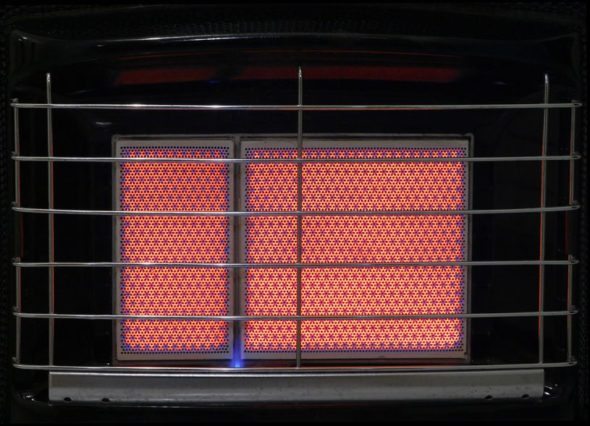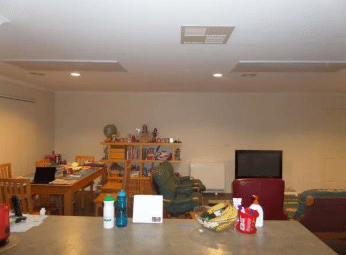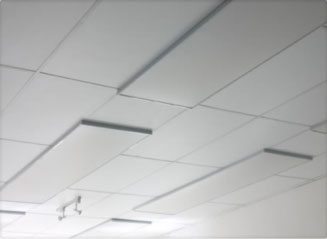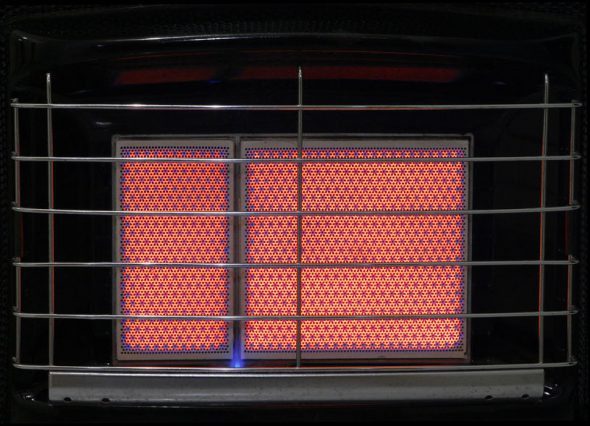At present, our conventional methods for domestic cooling and heating are generally directed at achieving a specified air temperature within rooms. We nearly always think in terms of ‘space’ heating/cooling but why do we do this?
These days, we commonly have large rooms in our houses which are often occupied by only one or two people – in these circumstances almost all of the energy we inject into our rooms is wasted since it is simply heating or cooling air in unoccupied areas of those spaces.
This almost total reliance on space, rather than ‘person’, heating is a relatively recent phenomenon. When I was a child in the 1950s I lived in a radiant heating world where the aim was to heat people not rooms.
The main heating in our house was a coal fire in our living room; we supplemented this with single bar electric heaters. We were warm on one side of our bodies and cold on the other; the house was smelly (and probably grimy) from fumes from the coal fire. I was very happy when the world moved on to space heating.

Now, 60 years on, we are in a very different place. Space heating, particularly of a whole house, but even of large rooms, is beginning to look like a high carbon option. Can ‘person’ heating make a comeback? Importantly, have technological developments now made radiant heating both comfortable and energy efficient?
Six months ago I was very much in the space heating camp (albeit at the room, not house, level), but over the past Canberra winter I’ve gone through a personal energy use epiphany. I’m now confident that we can successfully apply the old adage ‘heat people, not spaces’.
In 2015, as a key part of an energy makeover of our house, we installed Far Infrared (FIR) heating panels as a low energy alternative to heat pumps. We adopted FIR primarily because my wife said that the heat from heat pumps didn’t make her feel warm.
We installed two 1200W* FIR panels on the ceiling of our main living/kitchen space (see the photo below – this room has an area of about 45m2) at the end of last year’s heating season. When we installed the panels I was still very much in space heating mode – I figured that we would use the panels in a way that would keep the room warm; and by default we would be warm.
However, at the start of winter 2016 I soon discovered that the two FIR panels could work independently and that you didn’t have to have the room warm to enjoy beautiful thermal comfort. When I was sitting under one panel it felt no different whether the other panel was on or off.
On realising this, we of course only turned on a panel when someone was sitting under it – we made no attempt to warm the room. While I was sitting under a panel enjoying lovely warmth (around 20-22⁰C) on a cold Canberra evening, just a few metres away the temperature in one corner of the room was often around 12⁰C. I rapidly became a ‘person’, not ‘space’, heating convert!

I have written a more complete report on our FIR experience, but in summary I call the areas under the FIR panels thermal islands. I
estimate that even on a cold night one person would be able to attain beautiful thermal comfort under a panel which has dimensions of around 600mm X 600mm and a power output of about 400W. In the case of our living/kitchen area, this energy use compares to an estimated 4kW of heating that would be required if we were space heating the room.
Discovering the beauties of FIR soon had me thinking about what the next generation of domestic heating might look like. Given how discrete the FIR thermal islands are, it is not too hard to envisage the whole ceiling of a room being made up of a mosaic of 400W FIR panels – this would enable each individual in a room to turn on their own thermal island and select a temperature which suits their needs. In fact, FIR panels of these dimensions are now being made as tiles for suspended ceilings.

Of course, in practice, the energy gains of personal, rather than space, heating are not clear cut. With one person in a large room you will almost certainly use less energy by heating with FIR than you would using a heat pump. However, as the number of room occupants increases, or the size of the room decreases, the energy use/person balance between the two heating options is likely to change in favour of space heating.
It is all very well to dwell on heating, but for most regions in Australia cooling is the major energy use for a household. As climate change progresses this is likely to be even more so. I am now starting to turn my mind to ‘person’ cooling as summer 2016/17 approaches. On the face of it, it would appear to be much more difficult to create multiple zones of user designed cooling, rather than heating, within a room. I’ve not explored this too far as yet, but just as FIR opens up a world of ‘person’ heating I like to think that Li-ion batteries will give us a corresponding ‘person’ cooling option.
Ultimately new battery technology may enable us to each carry around some form of personal refrigeration. In the meantime, my start is much humbler and lower energy. There are now quite a lot of rechargeable fans on the market which are primarily designed for campers. I am currently in the process of acquiring a 6” rechargeable fan (weight 1kg) and intend to use this as a movable personal fan throughout our house. I see the untethering of fans from electrical cords and plugs as being a major boost to the practicality of using a personal fan within a house (I’m talking about an effective personal fan; not one of the very small ‘toy’ hand held fans that have been around for years).
It remains to be seen how effective this option will be compared to air conditioning. However, if this idea seems attractive but not cool enough, you may wish to keep an eye on a portable rechargeable air conditioner that is currently under development.
Dave Southgate retired from the public service in July 2012 after a 31 year career as an environmental specialist in the Australian Government Transport Department and then as the Australian Government representative on the United Nations International Civil Aviation Organization (ICAO) Committee on Aviation Environmental Protection (CAEP). Since his retirement he has expanded his climate change interests and has become fascinated with renewable energy.
See also: A journey to fossil fuel freedom – no heat pumps required
This article was originally published on RE sister site, One Step Off The Grid. To sign up for the weekly newsletter, click here
A previous version of this story said “We installed two 1200kW FIR panels on the ceiling…” The mistake was made by the subeditor.










